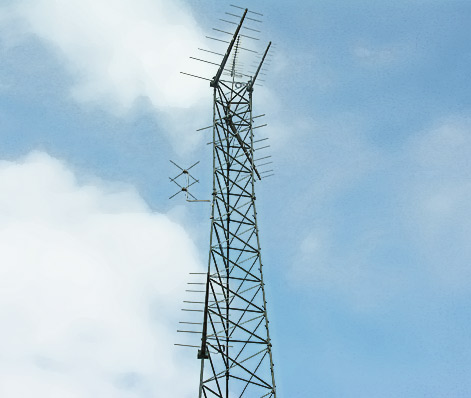Last month Comcast formed a new tower portfolio company, CTI Towers, Inc. (http://CTItowers.com).
CTI says it will own, operate, and develop telecommunications towers throughout the United States. Headquartered in Boston, CTI Towers will lease tower space to wireless operators and other tenants, creating additional tower capacity for rapidly evolving wireless businesses and technologies across the U.S.
That makes sense since Comcast has been in the tower business, albeit indirectly, since 1963 when Ralph J. Roberts, Daniel Aaron and Julian A. Brodsky purchased their first cable system in Tupelo, Mississippi. Virtually every cable system has at least one substantial tower for TV reception antennas, microwave relay dishes, etc.
(By the way, Comcast still owns the Tupelo system to this day, and it’s unlikely that any person with the last name of Roberts in Comcast’s senior management will ever allow that system to be sold.)
CTI Towers is launching with a portfolio of approximately 800 towers that were previously owned and operated by Comcast Cable subsidiaries (read: local Comcast cable systems). Essentially, the initial portfolio of towers are located at Comcast headends. If you’d like to verify this, go to the CTI web site and drill down to the overhead photos of the various tower sites…in many cases you’ll spot the tell-tail satellite dish farm right next door.
 Comcast’s Loveland, Colorado headend tower (CTI Site No. 10097). Photo by Kramer.Firm, Inc.
Comcast’s Loveland, Colorado headend tower (CTI Site No. 10097). Photo by Kramer.Firm, Inc.
So, by the stoke of a pen, Comcast has taken all of the towers and moved them from the operating expense column to the revenue unit column. I’m no tax expert, but I have to believe the very, very smart people at Comcast who are have found a way to take a tax advantage on this deal from day one.
Given Comcast’s long view, it would not surprise me if they move into the international market very quickly, partnering with cable operators in other countries.
Here’s an interesting twist for some local governments… In some cases governments have leased (or even given) access to government land for the installation of the local cable TV headend. If that’s the case in your jurisdiction, you might want to see where there are any restrictions on subleasing. If so, then you might want to visit the CTITowers web site to see whether the tower on your land is being offered for sublease. Better to cut off an permitted use before a sublease contract is signed.
Jonathan